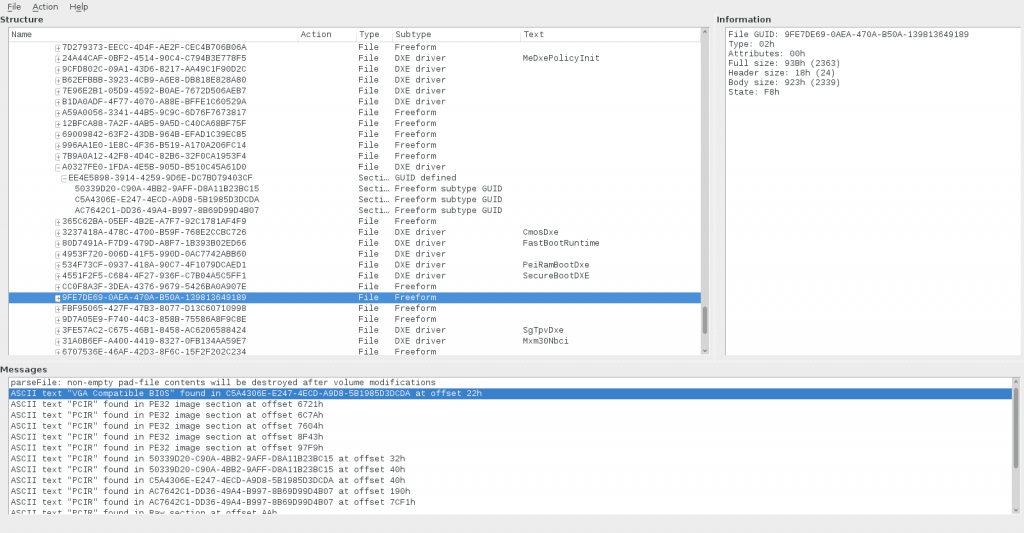

The Management Engine (ME) is sometimes just called a management engine, later is starts to become called the security engine: The author, Xiaoyu Ruan, is a security researcher with the Platform Engineering Group at Intel Corporation, and is responsible for designing cryptography infrastructure and security applications for Intel’s security and management engine. But it does read like an book-length whitepaper by Intel, explaining most of Intel’s hardware/firmware security offerings, with some crypto background on some of the designs. The book gives good background on how a chip vendor deals with hardware/firmware hybrid solutions, as well as how recent security researcher’s attacks against Intel have impacted their product designs. Much of the book focuses on boot integrity, process isolation, and various Intel hardware-based protections. This book talks about the various Intel boot security technologies, focusing on the Intel Management Engine (ME) and how ME interacts with the other Intel security technologies at the hardware, firmware, and OS-levels. For the past several years, the engine has been serving as the base of many security technologies included in Intel platforms. The book reveals the technical details of Intel’s security and management engine, with the focus on the architecture and design of its firmware infrastructure.

book review: Platform Embedded Security Technology Revealed Intel: please give us more control over the products we purchase. Some systems may need to be tamper-resistant to local users, but that’s just for enterprise bank employees, not for citizens.
UEFITOOL VS INSTALL
The locally-present user should be able to override features like this, and install what they want, at firmware, pre-OS and OS-level software.
UEFITOOL VS WINDOWS
I hope Intel - or other chip vendors - can help both audiences, not only enterprise vendors who want to use the OEM’s installation of Windows and never change their systems.

Security must be addressed, but the cost might be General Purpose Computing? To conserve words, I’ll just point to a few other blog posts on this topic by others: Boot Guard is a big new player in the security -vs- user-control equation. As a result, Intel Boot Guard, when activated, makes it impossible for end users to install replacement firmware such as Coreboot.”īoot Guard attempts to protect the system before Secure Boot starts. Intel Boot Guard is an optional processor feature, meaning that it does not need to be activated during the system manufacturing. When turned on, the processors verifies a signature contained in the firmware image before executing it, using the hash of the public half of the signing key, which is fused into the system’s Platform Controller Hub (PCH) by the system manufacturer (not by Intel). In short, if you want to make modifications to your motherboard image, downloading UEFITool is one of the best options available.As defined by Wikipedia: “Intel Boot Guard is a processor feature that prevents the computer from running firmware images not released by the system manufacturer. Also, there are some that come encrypted, in which case UEFITool cannot open them. The tool on which UEFITool is based is somewhat old, so some motherboard firmware may not work. However, it's important to know what parameters you're modifying, because if you flash an incorrectly modified file, you may be left without a motherboard or be forced to run recovery mode to flash an original firmware.
UEFITOOL VS UPDATE
With UEFITool, you can open the update file you've downloaded for your motherboard and view its structure, verify its integrity before flashing it, or, best of all, make modifications to the image. With it, it's possible to make a greater number of settings on the motherboard, as well as other improvements such as using a mouse to navigate its menus.
UEFITOOL VS CODE
With this program, you can view all the code behind the image of a motherboard in great detail, as well as make modifications.Īlthough the motherboard image on a PC is commonly called BIOS, most computers today use UEFI, or Unified Extensible Firmware Interface.

UEFITool is a program for viewing and editing BIOS and UEFI installation files.


 0 kommentar(er)
0 kommentar(er)
